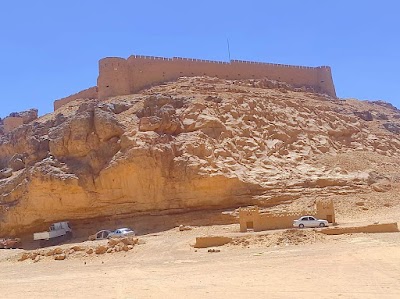Ghat Museum (متحف غات)
Overview
Situated in the heart of the enchanting Ghat District in southwestern Libya, the Ghat Museum is a cultural gem that invites travelers to step back in time and explore the rich heritage and history of this captivating region. Nestled within the Sahara Desert and surrounded by pristine dunes and rugged mountains, Ghat is a destination that promises adventure, history, and a deep connection with the traditions of the indigenous Tuareg people. Housed in a charming traditional building, the Ghat Museum plays a pivotal role in preserving and showcasing the unique cultural identity of this area.
The history of Ghat stretches back thousands of years, with evidence of ancient settlements and trade routes that once crisscrossed the Sahara. Once a crucial waypoint for caravans traveling between Sub-Saharan Africa and the Mediterranean coast, Ghat's historical significance is beautifully encapsulated within the museum's walls. Here, visitors can trace the evolution of the region from prehistoric times to the present day through a collection of artifacts, including rock engravings, pottery, and tools. Informative descriptions provide insightful glimpses into the lives of the people who inhabited these lands long before modern times.
One of the museum's most compelling features is its extensive collection of Tuareg artifacts. The Tuareg, often referred to as the "Blue People" due to their distinctive indigo-dyed clothing, are a nomadic Berber group with a rich cultural heritage. At the museum, you’ll discover an array of Tuareg jewelry, musical instruments, weapons, and traditional garments. These items not only highlight the craftsmanship and artistry of the Tuareg but also reflect their nomadic lifestyle, deeply intertwined with the unforgiving yet beautiful landscape of the Sahara.
The Ghat Museum also pays homage to Ghat's role as a trading hub. During the trans-Saharan trade era, Ghat was a bustling center where merchants exchanged valuable goods such as gold, salt, and textiles. The exhibits include maps and documents detailing these ancient trade routes, along with narratives about the traders and the perilous journeys they endured. This aspect of the museum provides a broader context of Ghat's importance in connecting different cultures and economies across vast distances.
Another notable section of the museum is dedicated to the region's natural history. The Sahara Desert, often perceived as a barren wilderness, is teeming with life and geological wonders. The museum's natural history exhibits showcase a variety of fossils, minerals, and displays about the diverse flora and fauna that have adapted to survive in one of the world's harshest environments. This section is particularly fascinating for those interested in geology and natural sciences, revealing the intricate and often surprising ways in which life and land are interconnected.
In addition to its permanent exhibits, the Ghat Museum frequently hosts temporary exhibitions and cultural events that further enrich the visitor experience. Workshops, lectures, and traditional music performances provide an immersive introduction to Tuareg customs and contemporary issues faced by the community. These events are often accompanied by local guides who share personal stories and insights, adding a layer of depth and authenticity to the museum's offerings.
The Ghat Museum not only preserves the past but also actively engages in cultural preservation and education. Collaborating with local and international organizations, it promotes the conservation of heritage sites around Ghat, including the famed rock art of the Acacus Mountains, a UNESCO World Heritage site. These efforts ensure that the cultural treasures of the region are protected and appreciated by future generations.
For those looking to visit the Ghat Museum, the journey itself can be an adventure. Ghat is relatively remote, and reaching it often involves traveling through breathtaking desert landscapes and picturesque oases. Whether you arrive by road from the coastal cities or through neighboring countries like Algeria, the trip to Ghat offers a chance to experience the serene beauty and vastness of the Sahara firsthand.
In conclusion, the Ghat Museum is more than just a repository of artifacts; it serves as a gateway to understanding the history, culture, and natural wonders of the Ghat District and the broader Sahara region. Standing as a testament to the resilience and creativity of the people who have called this land home for millennia, it promises an enriching experience that lingers long after your visit, whether you are a history buff, cultural enthusiast, or adventure seeker.



